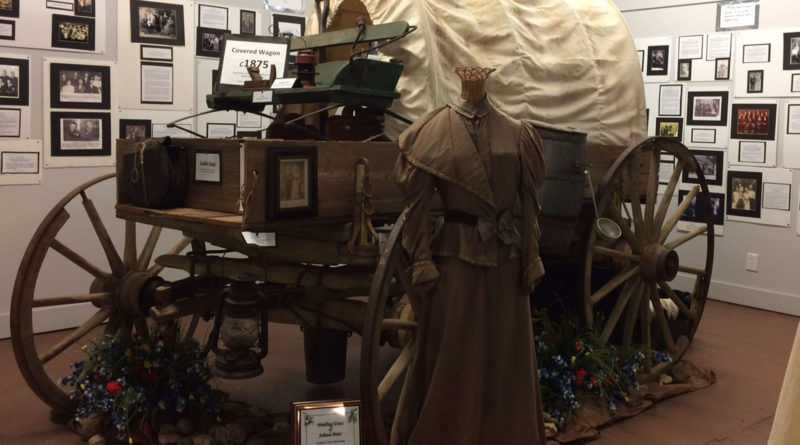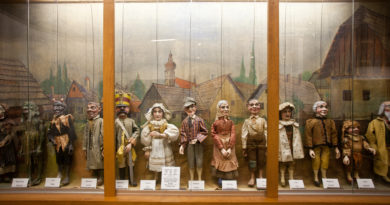Explore history of West
By Catherine Hosman
Photos contributed by Georgia Hutyra
If you are traveling on I-35 and see the 353 exit, get off and head east to downtown West, originally named Bold Springs. It’s just a short drive from the freeway and worth the visit to see the History of West Museum that opened in 2015.
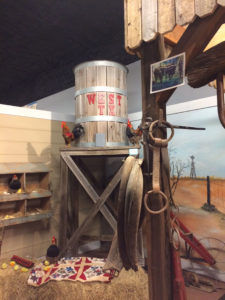
Don’t be in a hurry. The quality of this museum deserves the time you can invest.
Step through the door and be transported back in time to the early 1800s when the government opened the land for sale to settlers. The first settlers arrived from the east via covered wagon in the 1840s to farm and ranch the verdant country of Central Texas, a land still inhabited by Native Americans. In the 1860s migration lessened due to the Civil War.
By the 1870s immigrants began to arrive from the Czech Republic and Germany via ship to Galveston. From that point of entry the families loaded into covered wagons to take the 256-mile trek to a new country. There were no roads leading to West. Wagon trains traveled through prairie grasslands. It could take a year or more to reach the destination with stops for rest and unpredictable Texas weather.
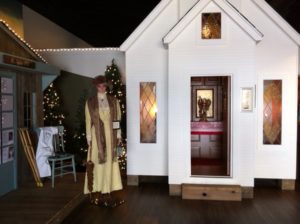
The museum is a carefully orchestrated walk through history. Life-size vignettes illustrate the town’s founding. There is a log cabin façade that symbolizes the home the first settlers built. An adjacent room features an authentic covered wagon driven in by one of the founding families. Except for a few changes for safety reasons, it still has the original base and wheels that show the wear and tear from the trek. Artifacts that represent the household goods settlers carried are displayed and images of a time past hang on the walls.
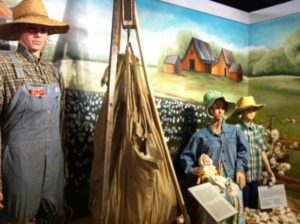
Other rooms depict the march of history. The museum pays homage to its settlers, early businesses, marriage on the frontier, cotton production, World War I, World War II, and the Czech heritage. Mannequins are adorned with mint-condition vintage clothing from the period.
“I didn’t have to look for anything,” said founding director Georgia Hutyra, who was born and raised in West. “Everything, every artifact, came from the people in West. I only accepted what they could share and only accepted one item from each family.”
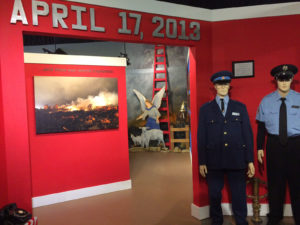
The most poignant display is the museum is dedicated to the April 17, 2013, West fertilizer plant explosion. Its memory is fresh and it touched the life of every resident.
After a tour of the museum, Hutyra took me to the site of the explosion, now an open field. A new nursing home and a combined middle and high school were built to replace the structures that were destroyed. New homes have been built, replacing houses that were severely damaged or destroyed in the blast.
There is a new EMS station and a new children’s playground under construction — the idea of a little boy whose fireman father was one of the first responders who died. His grandparents helped him raise the money for the park.
Across the road, 12 granite blocks encircle a water fountain as the memorial to the 12 first responders who lost their lives trying to save others. It is a work in progress.
Bringing the past to life
When Hutyra retired from her nursing career in Temple, where she and her husband lived for 30 years, and moved back to West, she wanted to nurture the artist in her and begin painting historical buildings. But the deeper she went in her research the more she wanted to have a museum.
“I had the name, created a nonprofit, but it took two years to find an appropriate building,” she said. “We would find a building and the structural engineer said it wouldn’t be safe.”
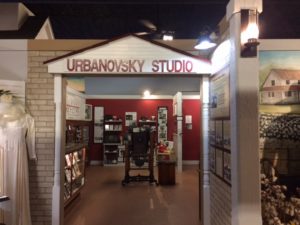
Hutyra and a volunteer board of directors overcame the obstacles. In 2013 they found the right building in the right location downtown. Two weeks later the fertilizer plant exploded — a temporary setback for a determined organization.
It took a long time for things to settle down in West and for the board of directors to see to the renovation and repair of their building. The dropped tile ceiling was destroyed by the blast. It was decided to leave the ceiling open, giving it a more historical look.
Hutyra did pick up her paint brush again. Her original wall murals and framed images in the museum are blended with the work of other artists that depict early West. She immortalized the founders of the community with portraits of people that seem to tell the story of life in West just by looking into their eyes. Accompanying narration cards document their place in history.
Renowned Western artist John French, who was born in Waco but frequented West, donated a painting.
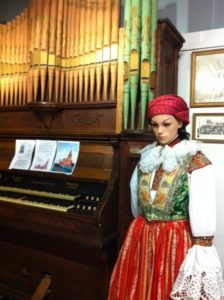
Since its opening the museum has hosted many dignitaries, including former Czech Republic Prime Minister Bohuslav Sobotka, Ambassador Petr Gandalouk and former Prague Mayor Thomas Hudecek. Mayor Ivana Majickova of Kunovice, CR, visited with West Mayor Tommy Muska on Sept. 15, 2015, and together named West and Kunovice as sister cities.
“Without the museum, the history of West would have been a total loss,” said Hutyra. “It makes me feel good that we can teach young folks and future generations. Families can bring guests from out of town to show off our town. We are Texans and we love showing off our heritage.”
IF YOU GO: History of West Museum
Hours: 10 a.m. to 4 p.m. Thursday through Saturday
Location: 112 E. Oak St., West
Phone: 254-755-6762
Before leaving town, stop in at the Village Bakery directly across the street from the museum. It offers a variety of sweet and savory kolaches, homemade pies, breads and other Czech baked delicacies.

